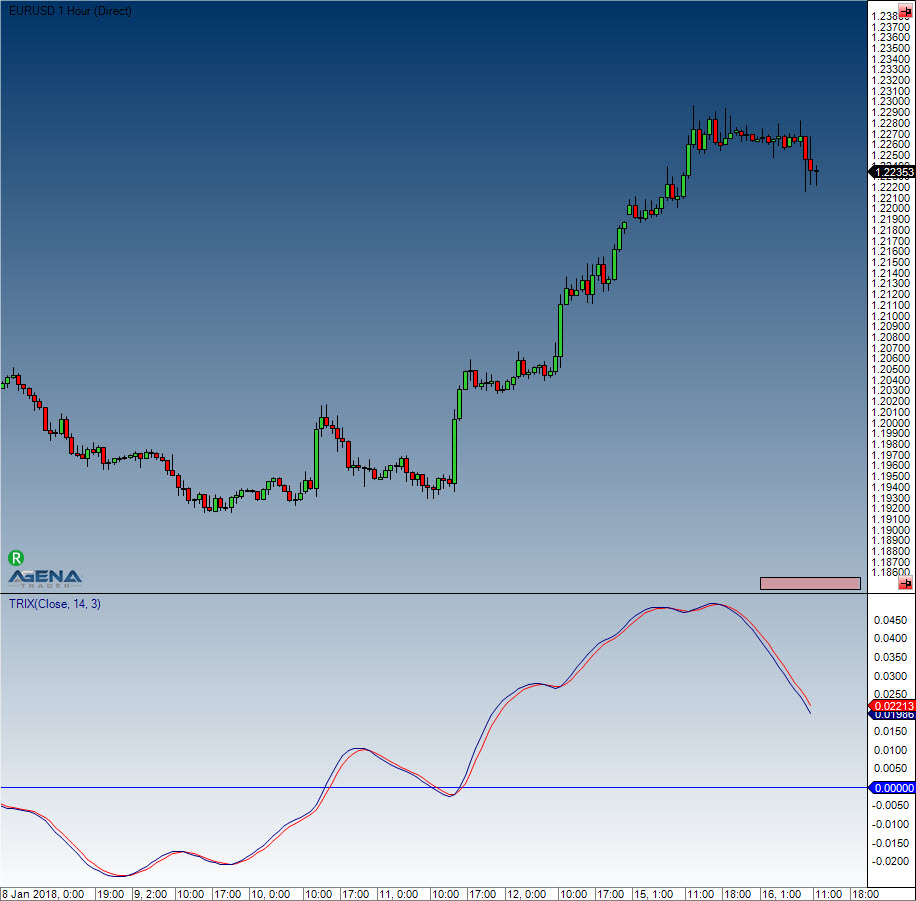TRIX - Triple Exponential Moving Average
Description
Jack Hutson developed this TRIX indicator, which is a 1-day rate-of-change indicator. What this means is that day 2 is divided by day 1, day 3 by day 2 and so on and so forth, and this is then applied to a triple exponential moving average of the closing prices. This results in a zero line fluctuating oscillator which is used as trend indicator thanks to its stability.
Interpretation
A buy signal is created when the TRIX indicator crosses the zero line from bottom to top. A sell signal is generated when the zero line is broken in a downwards direction.
Usage
TRIX(int period, int signalPeriod)
TRIX(IDataSeries inSeries, int period, int signalPeriod)
TRIX(int period, int signalPeriod)[int barsAgo]
TRIX(IDataSeries inSeries, int period, int signalPeriod)[int barsAgo]
//For the signal line
TRIX(int period, int signalPeriod).Signal[int barsAgo]
TRIX(IDataSeries inSeries, int period, int signalPeriod).Signal[int barsAgo]Return value
double
When using this method with an index (e.g. TRIX(14, 3)[int barsAgo] ), the value of the indicator will be issued for the referenced bar.
Parameters
inSeries Input data series for the indicator
period Number of bars included in the calculations
signal period Number of bars included in the signal line calculation
Visualization

Example
Last updated